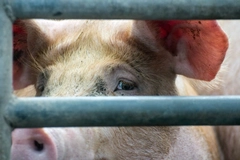
- Industry news
Industry news
- Category news
Category news
- Reports
- Key trends
- Multimedia
- Journal
- Events
- Suppliers
- Home
- Industry news
Industry news
- Category news
Category news
- Reports
- Key trends
- Multimedia
- Events
- Suppliers
Novozymes Q4 Profit Misses Forecast, Cautious on 2012 Outlook

For the full 2011 year, Novoymes has reported that growth in local currencies was 10% (8% DKK, 7% organic) compared to 2010. EBIT increased by 11% and took the EBIT margin to 22.3% despite a negative impact from higher raw material prices, acquisitions, and unfavorable currency rates.

Jan 20 2012 --- Enzymes producer Novozymes A/S has reported that fourth-quarter 2011 net profit grew 3% on the year, slowing down from the previous quarters and falling below expectations, and gave a cautious outlook for 2012.
For the full 2011 year, Novoymes has reported that growth in local currencies was 10% (8% DKK, 7% organic) compared to 2010. EBIT increased by 11% and took the EBIT margin to 22.3% despite a negative impact from higher raw material prices, acquisitions, and unfavorable currency rates. Net profit grew by 13%, and free cash flow before acquisitions and divestments came in high, supported especially by the increased net profit. The full year 2012 expectations reflect uncertainty about the global economy, expressed by relatively wide intervals for sales and earnings growth guidance.
“I’m delighted to report that we delivered on our full-year growth expectations despite the uncertainty about the global economic situation,” says Steen Riisgaard, President & CEO. “The uncertainty is expected to continue in 2012 and, although the characteristics of our products, the many different industries we serve, and the way the business operates have made Novozymes’ sales and earnings fairly resilient in previous economic downturns, we currently see scenarios at both the high and low end of the guidance. On the development side, I’m particularly excited that one of our partners in cellulosic ethanol is scheduled to open the world’s first commercial-scale production facility in 2012 in Italy. More plants will follow in the years to come, and Novozymes is ready and well positioned to supply the producers with the right enzymatic solutions, regardless of substrate and production technology. To sum up, although 2012 looks to be another uncertain year with respect to the global economy, it's also set to bring some very exciting developments with the focus remaining on innovation, market presence, and operational excellence.”
Total sales in 2011 were DKK 10.51 billion (EUR1.413 billion) (, an increase of 8% compared to last year. Exchange rates impacted sales negatively, and sales in LCY were up by 10%. Acquisitions contributed approximately 3 %-points to growth.
9,724 10,510
Enzyme Business sales were up by 6% in LCY. Sales in DKK reached 9,489 million (EUR1.276 billion), up by 4% compared to 2010. Sales of Household Care Enzymes, Feed & Other Technical Enzymes, and Food & Beverages Enzymes were the largest growth contributors in the period. Food & Beverages Enzymes sales increased by 8% in LCY and by 6% in DKK compared to 2010. Higher demand, particularly from the specialty food, starch, and alcohol industries, was the main driver. Enzyme sales to the baking industry saw a modest, expected decline, whereas newly introduced products and concepts for the production of healthy foods contributed positively to growth throughout the year.
Sales in Europe, the Middle East, and Africa (Europe/MEA) increased by 8% in LCY and by 7% in DKK compared to 2010. Household Care Enzymes and Feed & Other Technical Enzymes were the main growth contributors in the period, whereas Bioenergy Enzymes sales fell slightly. Sales in North America were up by 7% in LCY and by 3% in DKK compared to 2010. Microorganisms sales, positively impacted by acquired BioAg sales, Biopharma sales, and Feed & Other Technical Enzymes sales were the strongest growth contributors during the year.
Sales in Asia Pacific increased by 8% in LCY and by 7% in DKK compared to 2010. Household Care Enzymes, Food & Beverages Enzymes, and Microorganisms sales were the strongest growth contributors in the period. Sales in Latin America were up by 43% in LCY and by 38% in DKK compared to 2010. Household Care Enzymes and Feed & Other Technical Enzymes performed very well in the period. Microorganisms sales also grew strongly, mainly due to acquired BioAg sales.
“The full-year 2012 guidance reflects the uncertainty about the global economy. It is difficult to predict at what pace global demand might deteriorate in the event of further negative economic sentiment or signals. Although Novozymes has proven relatively resilient in recessionary economies (last shown in 2009) thanks to the characteristics of some of the markets our products and technologies serve and the advantages they offer, our sales are also partly dependent on consumption and GDP growth. The full-year organic sales growth guidance of 4–8% addresses the current level of uncertainty,” the company concluded.
According to Novozymes’ own estimates, the global industrial enzyme market grew in 2011 to a total market value of approximately DKK 20 billion, up from DKK 19 billion in 2010. The industry did not see any major new entrants to the market in 2011 besides the change of ownership of Danisco, which was acquired by DuPont. Novozymes’ overall market share was maintained at roughly 47% and was positively affected by a slight increase in market share in Feed and Food Enzymes and reduced by a slightly lower market share in the US fuel ethanol enzyme market.










